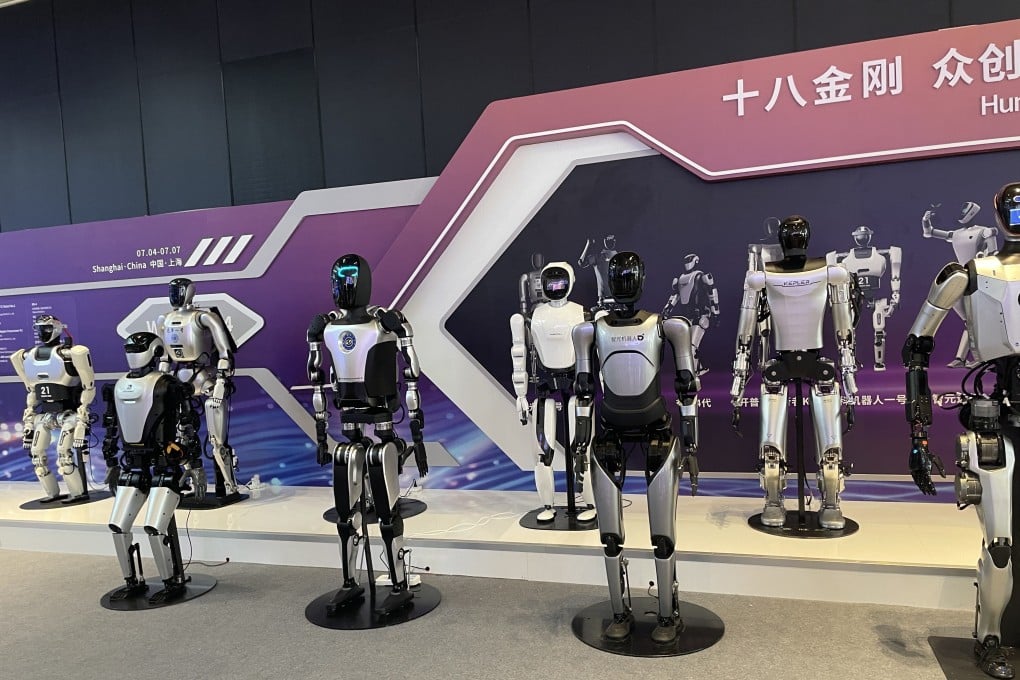Tesla shows its humanoid robot Optimus at China AI conference, but behind glass
- Although humanoid robots have started to be used in China in a variety of applications, they are still in the lab research stage, according to manufacturers

The Optimus humanoid robot, equipped with Tesla’s self-developed neural network and computer vision technology, is largely seen as the future of robots as it is able to handle multiple tasks.
Tesla CEO Elon Musk said at the company’s annual shareholder’s meeting that the humanoid robot, which has yet to enter full-scale production, could lift Tesla’s market cap to US$25 trillion in the future.
The single Optimus shown at the Shanghai event attracted a lot of attention, even though it was behind glass, and did not move or interact with visitors. Tesla, meanwhile, promoted the humanoid robot on Chinese social media Weibo, asking the public to “witness the further evolution of humanoid robots”.

A total of 18 robots, including “Healthy Loong” developed by Humanoid Robots (Shanghai), were presented at the event.